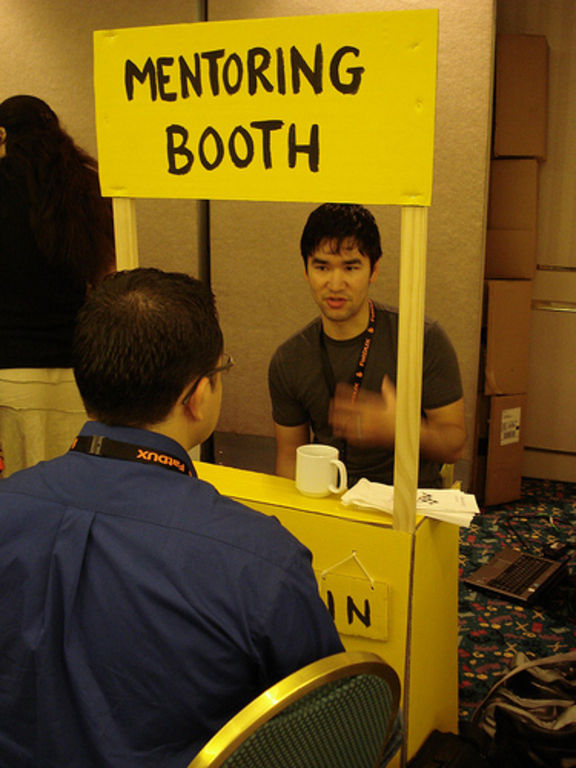
ELGL’s Josh Halladay goes beyond the headline, this time with management educator and author, Russ Linden. His article in Governing Magazine What Legacy of Leadership Will You Leave? addresses the topic of the next generation and how current professionals can use them to create a legacy. Anyone can find value in the article, whether you are a mid-career administrator, one who has reached their career peak, and even those entering the work force. We asked him a few questions that draw from his management expertise.
The Story
Ross Linden poses a number of provocative questions in the recent Governing article, What Legacy of Leadership Will You Leave?, including how do you want to be remembered? how do you want people to remember you as a leader and manager? Who have you helped to become a future leader? The article left us intrigued and full of additional questions so we contacted Russ for more answers. Below are additional resources provided by Russ that aim to aid you in your management career.
Vitals
Russ Linden

Experience: Principal at Russ Linden and Associates, Senior Faculty Member at Fedeal Executive Institute, and Director, Executive Education Programs at University of Virginia, Institute of Government
Education: University of Michigan, Bachelor of Arts (B.A.), MSW (Social Work) and University of Virginia, Ph.D., Organizational Leadership
Connect: LinkedIn and World Wide Web
Background Check on Ross
 Since 1980, Russ has helped government, non-profit and private-sector organizations develop leadership, foster innovation, and improve organizational performance. He is an adjunct faculty member at the University of Virginia, University of Maryland, and the Federal Executive Institute. He writes a column on management innovations for The Virginia Review, where he serves as Contributing Management Editor, and has produced national videoconferences on re-engineering and on the human side of change. In 2002 Russ was named the Williams Distinguished Visiting Scholar at the State University of New York (Fredonia), for Spring, 2003.
Since 1980, Russ has helped government, non-profit and private-sector organizations develop leadership, foster innovation, and improve organizational performance. He is an adjunct faculty member at the University of Virginia, University of Maryland, and the Federal Executive Institute. He writes a column on management innovations for The Virginia Review, where he serves as Contributing Management Editor, and has produced national videoconferences on re-engineering and on the human side of change. In 2002 Russ was named the Williams Distinguished Visiting Scholar at the State University of New York (Fredonia), for Spring, 2003.
Russ Linden’s bachelor’s and master’s degrees are from the University of Michigan. His Ph.D. is from the University of Virginia. His major volunteer activities involve programs that help low-income youth succeed in school and go on to college.
Q & A with Ross
How can job seekers, who likely do not have readily available access to a professional in their field, find a mentor?

It’s much easier to find a mentor once you have a job. Some organizations have formal mentoring programs, in which experienced staff volunteer to be mentors, and newer employees who want a mentor are matched with one. These can be very effective.
Finding a mentor before you have a job, or are in between jobs, takes some creativity and initiative. Here are a few options:
- Talk with staff at a Senior Center (or other agency serving seniors). Many seniors have had excellent careers, and some of them can be excellent mentors (and might appreciate working with a young professional and passing on their experience)
- Go to the HR office in an organization that you might want to work in. explain your career goals and interests, and ask if the staff know of some people who retired from their organization and might be interested in mentoring you.
- Seek an internship in an organization you might approach for a job in the future. Internships are a mixed bag; some are great because the staff want to help you learn, while others are little more than free labor for the organization. Still, worth checking out.
How can a leader help their organizations ease the many transitions of today’s rapidly changing workplace environment?
Most of us are all too comfortable in our habits. The lesson for leaders in an era of change: Make the novel seem familiar.
- Rehearse for the unusual. Successful sports coaches put their players through drills to prepare them for a variety of situations that occur only occasionally: how the football team will move down the field in its “two-minute offense,” or what the basketball team will do when it has the ball with 10 seconds left and it’s down by two points. These drills help the players feel like they’re in familiar territory when the situation arises during a game. The military and local first responders also excel at such training.
- Remind people of a past success. Some change leaders ask employees to recall when they have done something in the past that was similar to the current change. For example, I once saw a state agency head introduce a new HR process by noting a previous process change in one division of the organization. “That process is working beautifully now; it took a while, but we pulled it off, and our customers love it. So we know something about changing processes. …”
- Tap a core competence. Some leaders and managers create a sense of familiarity by showing how one of the organization’s core competencies can be used to implement change. For instance, many state and local government emergency management agencies have core competencies in planning, communications, and rapid response. These same skills can be critical when implementing change initiatives. Ask some emergency management staff to take key roles in the change by leading the planning and communications teams.
- Engage familiar people. Some organizations have brought back former (and successful) leaders to take over the reins during a crisis. That’s what Starbucks did when it lost its edge and brought Howard Schultz back as CEO in 2008. And that’s what the U.S. Environmental Protection Agency did in 1983 when the agency’s reputation was seriously compromised: It brought back its founding director, William Ruckelshaus, a man known for his integrity and dedication to the EPA’s mission.
- Use familiar language. Robert Kennedy once noted that “everybody is in favor of improvement, but mention the word ‘change’ and you immediately make enemies.” Language has a powerful impact on how people perceive their world, so think carefully about the language you use when describing the change. I once consulted with a fine local government department head who had named one of his change projects “Maintaining our World-Class Edge.” That might have worked if most of the employees thought that the agency was functioning extremely well. Alas, many of the staff thought that their agency was functioning poorly, and the title resulted in a proliferation of Dilbert-style cartoons. On the other hand, the Federal Aviation Administration’s strategic plan is called “The Flight Plan.” Because FAA employees take great pride in their agency and its accomplishments, the term “Flight Plan” has a very clear and positive meaning to them.
- Note that not everything will change. When managing a transition, effective leaders point out what won’t be different as well as what will. If employees will retain their pay grade and titles, if they’ll need the same skills to do their work or if they’ll remain in the same unit, say so. That helps put many people at ease.
And here’s one final thought. You can use Charles Duhigg’s insight — make the novel seem familiar — to build your workers’ confidence about managing change. If your organization has been sailing through turbulent seas in recent years and it’s handled the ups and downs well, refer to that experience and the employees’ resilience. Telling your associates that “we’ve been here before, we know how to handle this” is both honest and reassuring. It suggests that the staff has developed a new habit — the habit of change.
What’s an obstacle that managers often face and how can they overcome it?
 The tyranny of the immediate. It has many causes. One of them, sadly, is that some people get hooked by the rush to meet endless and urgent deadlines, by feeling constantly in demand and terribly important. But for those of you who aren’t impressed by 16-hour workdays and a BlackBerry that never pauses, there are ways to avoid this condition. Here’s a starter list:
The tyranny of the immediate. It has many causes. One of them, sadly, is that some people get hooked by the rush to meet endless and urgent deadlines, by feeling constantly in demand and terribly important. But for those of you who aren’t impressed by 16-hour workdays and a BlackBerry that never pauses, there are ways to avoid this condition. Here’s a starter list:
- Turn off the visual and audio alerts made by incoming emails. They only reduce your productivity.
- Consult periodically with a diverse set of important stakeholders and customers. Ask them about their priorities and expectations of your organization. This allows you to be proactive in keeping your finger on the pulse of your immediate environment. If you don’t seek out feedback from the groups that you’re most interested in, you’ll continually be in a reactive mode — responding only to those who are complaining or have an axe to grind.
- Practice “managing by wandering around.” Visit operational units to learn about their successes and challenges. Visit partner organizations to see how they’re dealing with trends that are affecting you. And take one or more members of your team with you on these trips, so that you have a shared experience to examine together.
Take some quiet time. The tyranny of the immediate, by definition, provides no time to reflect. But reflection and analysis are especially important when we’re paddling in turbulent waters. And quiet time only occurs away from the action of daily operations. Whether it’s a formal staff retreat, a book on a very different topic or a long walk with a trusted friend, be sure to give yourself time to reflect and rejuvenate.
- Create a “kitchen cabinet.” Gather a small group of trusted people whose judgment you respect and use them as a sounding board. Share your ideas and concerns, and ask for their candid reactions. It helps if they bring different perspectives. And they must be people who want you to succeed and expect nothing in return.
- Perhaps most important, remember this: “The main thing is to keep the main thing the main thing.” This advice comes from Jim Barksdale, a wise and super-smart high-tech leader who served as a senior executive at companies including FedEx and Netscape. Barksdale preached this over and over; everyone in his companies knew he was serious about his mantra.
What is one question you would encourage all managers to consider?
 How’s your court vision?
How’s your court vision?
A large U.S. ship is cruising in the North Atlantic. A blip on its radar reveals what seems to be a ship in its path. The ship’s captain exchanges messages with the person responsible for the other vessel:
Captain: “Please change course 15 degrees to the north. Over.”
Response: “Change your course 15 degrees to the south. Over.”
Captain: “I repeat, change your course 15 degrees! Over!”
Response: “Negative captain, I’m not changing anything!”
Captain: “Sir, this is the U.S.S Montana, the second largest vessel in the North Atlantic fleet. You WILL change course 15 degrees, or I will be forced to take measures to ensure the safety of this ship. OVER!“
Response: “This is a lighthouse, mate. It’s your call!”
When a navy captain is given command of a ship, he is told in no uncertain terms that it is his ship (the great majority of captains are still males). He is responsible for whatever happens to the ship, and he has full authority to make all decisions. However, while it is his ship, it’s most definitely not his ocean!
A college basketball coach gave a talk to one of my classes some years ago. He was asked what he looks for when recruiting high-school players. “Court vision is one of the key skills,” he said. “What’s that?” we asked. “It’s the ability to see the whole court, to use peripheral vision in order to anticipate scoring opportunities, and to see what the other team is about to do.”
Court vision is equally important for managers and leaders. It helps them spot early indicators that their customers and stakeholders may be upset about something. It gives them insights into the expectations and needs of the 20-somethings entering the workforce. Court vision can also help us think broadly when we’re given a big task. Rather than ask, “How am I going to get this done?”, we’re more likely to ask, “Who else has the skills and expertise to help accomplish this?”
But what if this kind of thinking doesn’t come naturally? What if we sometimes succumb to tunnel vision? Here some steps that have helped others:
 “Get up on the balcony.” This is a term from the fine book Leadership on the Line, by Ronald A. Heifetz and Marty Linsky. They urge leaders to periodically leave the “dance floor” (where daily operations occur) and get up on the balcony, where they can better view what’s happening. The “balcony” might involve visiting other organizations that have similar functions or it might mean conducting a retreat with your team where you gain some perspective on the unit. Other “balcony” activities include having a long conversation with your manager to learn how your unit fits into the larger scheme of things, or periodically working from home where you have time to think and reflect.
“Get up on the balcony.” This is a term from the fine book Leadership on the Line, by Ronald A. Heifetz and Marty Linsky. They urge leaders to periodically leave the “dance floor” (where daily operations occur) and get up on the balcony, where they can better view what’s happening. The “balcony” might involve visiting other organizations that have similar functions or it might mean conducting a retreat with your team where you gain some perspective on the unit. Other “balcony” activities include having a long conversation with your manager to learn how your unit fits into the larger scheme of things, or periodically working from home where you have time to think and reflect.
Conduct exit interviews with those leaving your unit. It often amazes me how much street wisdom people carry around in their minds — wisdom that’s not usually shared with others unless we ask. However, most people feel free to share their views on an organization when they’re getting ready to leave it.
Meet with managers and staff in units that interact with yours. Find out how your work affects them, and vice versa. Find out what pressures and opportunities they’re encountering. Ask what you could do to make their work easier/better.
Think carefully about the questions you ask your staff. When someone proposes a new idea for a program or service, ask: Have we (or others) tried that before? If so, how did it work? What might be some unanticipated consequences?
Finally, spend time with others who have good court vision. It’s smart to learn from the best. Ask them what steps they take to scan the internal and external environment. Find out what helps them anticipate future trends and challenges, and what keeps them up at night.
The environment surrounding most government agencies today is increasingly complex and turbulent. Court vision can help us make sense out of the chaos. It might even help navy captains avoid confrontations with lighthouses.
Supplemental Reading

- The Fine Art of Managing Expectations
- Why Don’t These People Act Like Adults?!?
- Working Across Boundaries
- Management Matters – The Public Manager
Rest of the Story Archives
